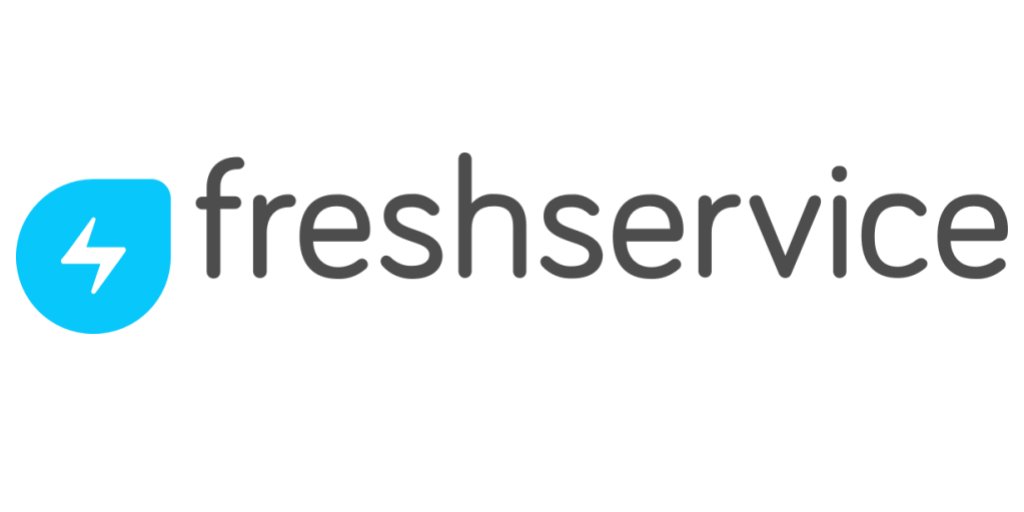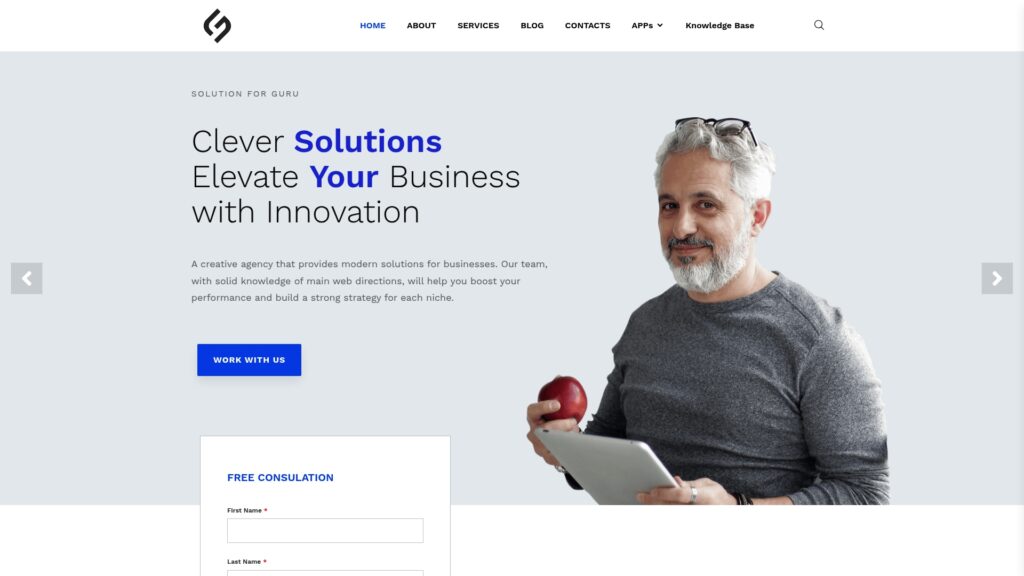Common ITSM Challenges and How to Overcome Them

In today’s digital-first business environment, IT Service Management (ITSM) has become the backbone of organizational efficiency. However, implementing and maintaining effective ITSM practices presents numerous challenges that can hinder service delivery, frustrate teams, and impact business outcomes. From managing complex workflows to ensuring seamless communication across departments, organizations struggle to optimize their ITSM frameworks. Consequently, understanding these challenges and implementing proven strategies to overcome them is essential for any organization seeking to enhance its IT service delivery and support capabilities.
Table of Contents
- Quick Summary
- What Are the Most Popular Challenges in ITSM?
- How Do Leading ITSM Platforms Address These Challenges?
- Why Does Legacy System Integration Create ITSM Bottlenecks?
- How Can Organizations Overcome Resistance to ITSM Adoption?
- What Strategies Help Manage Inefficient Incident Management?
- How Do You Address Poor Communication and Collaboration?
- Why Is Lack of Automation Holding Your ITSM Back?
- How Can You Improve Knowledge Management in ITSM?
- What Are the Best Practices for ITSM Metrics and Reporting?
- How Do Budget Constraints Impact ITSM Implementation?
- Summing up
- Frequently Asked Questions
Quick Summary
This comprehensive guide explores the eight most critical ITSM challenges organizations face today and provides actionable solutions to overcome them. Furthermore, we examine how leading ITSM platforms like Freshservice, ManageEngine, and Zendesk help address these issues through their specialized features. Throughout this article, you’ll discover practical strategies for improving incident management, enhancing automation, managing change resistance, and optimizing your ITSM investment. Additionally, we’ll explore how partnering with experienced implementation specialists can accelerate your ITSM success.
What Are the Most Popular Challenges in ITSM?
Organizations implementing or maintaining ITSM frameworks consistently encounter several recurring challenges that can significantly impact their service delivery effectiveness. Understanding these challenges represents the first step toward developing comprehensive solutions.
| Challenge | Impact Level | Common Symptoms | Business Consequence |
| Legacy System Integration | High | Fragmented data, manual processes | Increased operational costs, slower service delivery |
| User Adoption Resistance | High | Low platform usage, continued workarounds | Wasted investment, inconsistent processes |
| Inefficient Incident Management | Critical | Long resolution times, ticket backlogs | Customer dissatisfaction, productivity loss |
| Poor Communication | Medium-High | Duplicate work, missed updates | Project delays, team frustration |
| Lack of Automation | High | Manual repetitive tasks, human errors | Resource drain, slow response times |
| Inadequate Knowledge Management | Medium | Repeated issues, knowledge silos | Inefficient problem-solving, training overhead |
| Insufficient Metrics | Medium | Unclear performance, poor decisions | Lack of improvement, misaligned priorities |
| Budget Constraints | Variable | Limited features, delayed implementations | Competitive disadvantage, staff burnout |
The Core Challenge Categories
The challenges organizations face in ITSM typically fall into three main categories: technological, organizational, and strategic. Technological challenges involve system integration, automation capabilities, and platform limitations. Meanwhile, organizational challenges encompass user adoption, communication breakdowns, and cultural resistance to standardized processes. Strategic challenges include budget allocation, metrics definition, and alignment with business objectives.
Moreover, these challenges rarely exist in isolation. For instance, insufficient automation often leads to poor incident management, which then creates communication bottlenecks. Therefore, addressing ITSM challenges requires a holistic approach that considers the interconnected nature of these issues.
How Do Leading ITSM Platforms Address These Challenges?
Different ITSM platforms approach common challenges with varying philosophies and feature sets. Understanding how Freshservice, ManageEngine, and Zendesk tackle these issues can help organizations select the right solution for their specific needs.
Freshservice: Cloud-Native Simplicity

Freshservice positions itself as a modern, user-friendly ITSM platform designed to address adoption challenges through intuitive interfaces and minimal configuration requirements. The platform emphasizes ease of deployment, making it particularly attractive for organizations struggling with legacy system complexity.
Key Strengths:
- Quick Implementation: Freshservice’s cloud-native architecture enables rapid deployment, typically reducing implementation time from months to weeks
- User Experience Focus: The platform features consumer-grade interfaces that minimize training requirements and encourage user adoption
- Built-in Automation: AI-powered automation capabilities, including Freddy AI, help organizations reduce manual workload across incident, problem, and change management
- Integration Ecosystem: Pre-built integrations with popular business tools address the legacy system integration challenge
Additionally, Freshservice offers flexible pricing tiers that help organizations manage budget constraints while accessing enterprise-grade ITSM capabilities. The platform’s self-service portal empowers end-users to resolve common issues independently, consequently reducing ticket volume and improving first-contact resolution rates.
ManageEngine: Comprehensive Enterprise Solution

ManageEngine ServiceDesk Plus takes a comprehensive approach to ITSM challenges by offering an extensive feature set that addresses virtually every aspect of IT service management. This platform particularly excels in environments requiring deep customization and complex workflow management.
Key Strengths:
- Extensive Customization: ManageEngine provides granular control over workflows, forms, and processes, enabling organizations to match the platform to their specific requirements
- Asset Management Integration: The platform’s integrated IT asset management (ITAM) capabilities address the challenge of fragmented data by providing unified visibility across IT resources
- Advanced Reporting: Comprehensive analytics and customizable dashboards help organizations overcome insufficient metrics challenges
- On-Premise and Cloud Options: Flexible deployment models address diverse organizational requirements and infrastructure constraints
Furthermore, ManageEngine’s competitive pricing structure makes enterprise-level ITSM capabilities accessible to mid-sized organizations struggling with budget limitations. The platform’s robust API facilitates integration with legacy systems, thereby reducing the technical debt that often hampers ITSM effectiveness.
Zendesk: Unified Service Experience

Zendesk approaches ITSM from a unified service management perspective, combining IT service management with customer service capabilities. This integration addresses the communication and collaboration challenges that plague many organizations by creating a single platform for all service interactions.
Key Strengths:
- Omnichannel Support: Zendesk consolidates communications across email, chat, phone, and social media, eliminating the communication silos that create ITSM bottlenecks
- Knowledge Base Excellence: The platform’s sophisticated knowledge management capabilities directly address inadequate documentation challenges
- Scalability: Zendesk’s architecture scales seamlessly from small teams to enterprise deployments, accommodating organizational growth
- AI and Automation: Advanced AI features automate routine tasks, suggest solutions, and route tickets intelligently
Moreover, Zendesk’s marketplace offers thousands of third-party integrations and apps, enabling organizations to extend functionality without extensive custom development. The platform’s focus on user experience helps overcome adoption resistance by making the system intuitive for both agents and end-users.
Why Does Legacy System Integration Create ITSM Bottlenecks?
Legacy systems represent one of the most persistent and challenging obstacles to effective ITSM implementation. These older platforms, often critical to business operations, create friction points that prevent seamless service delivery.
The Technical Integration Challenge
Legacy systems typically lack modern APIs, use outdated data formats, and operate on different architectural principles than contemporary ITSM platforms. Consequently, integrating these systems requires custom development, middleware solutions, or manual data synchronization. This technical complexity increases implementation costs, extends project timelines, and creates ongoing maintenance burdens.
For example, organizations often maintain incident tracking in one system, asset management in another, and change management in a third. When these systems cannot communicate effectively, service desk agents waste valuable time switching between platforms, manually transferring information, and reconciling conflicting data. This fragmentation directly impacts incident resolution times and service quality.
Data Quality and Consistency Issues
Legacy systems frequently contain outdated, duplicate, or inconsistent data accumulated over years of operation. When organizations attempt to integrate these systems with modern ITSM platforms, data quality issues multiply exponentially. Clean, accurate data forms the foundation of effective ITSM, yet achieving data quality across disparate legacy systems remains extraordinarily challenging.
Common Data Challenges:
| Data Issue | Impact on ITSM | Mitigation Strategy |
| Duplicate Records | Confused asset tracking, inaccurate reporting | Implement data deduplication tools before integration |
| Inconsistent Formats | Integration failures, manual reconciliation | Develop comprehensive data transformation rules |
| Outdated Information | Poor decision-making, incorrect assignments | Establish data governance policies with regular audits |
| Missing Fields | Incomplete service context, workflow breaks | Define mandatory data elements and backfill systematically |
Strategic Approaches to Legacy Integration
Successfully overcoming legacy system integration challenges requires both technical solutions and strategic thinking. Organizations should begin by conducting a comprehensive assessment of their existing systems, identifying critical integrations versus nice-to-have connections. This prioritization ensures resources focus on integrations that deliver maximum business value.
Furthermore, modern ITSM platforms like Freshservice, ManageEngine, and Zendesk offer various integration approaches. Freshservice provides pre-built connectors for common enterprise systems, reducing custom development requirements. ManageEngine’s flexible API architecture enables deep integrations with complex legacy environments. Zendesk’s marketplace offers numerous third-party integration apps that bridge gaps between legacy systems and modern service management.
Additionally, organizations should consider gradual migration strategies rather than attempting complete system replacement overnight. Phased approaches allow teams to validate integrations, address issues incrementally, and maintain business continuity throughout the transition period.
How Can Organizations Overcome Resistance to ITSM Adoption?

User adoption resistance represents perhaps the most insidious ITSM challenge because the best technology platform becomes worthless if people refuse to use it. Resistance typically stems from change fatigue, perceived complexity, disruption to established workflows, and inadequate communication about benefits.
Understanding the Root Causes of Resistance
Before addressing resistance, organizations must understand why employees resist ITSM adoption. Common reasons include fear of increased workload, concerns about job security, attachment to familiar processes, and skepticism about whether the new system will truly improve their work experience. Moreover, technical staff who have developed workarounds over years may view standardized ITSM processes as bureaucratic obstacles rather than helpful structure.
Research consistently shows that resistance intensifies when users feel excluded from the implementation process. When IT departments select and deploy ITSM platforms without meaningful input from end-users and service desk agents, they inadvertently create adversarial relationships that undermine adoption.
Building a Change Management Framework
Effective change management transforms resistance into engagement. Organizations should establish a comprehensive change management program that addresses emotional, practical, and organizational dimensions of ITSM adoption.
Key Change Management Components:
- Executive Sponsorship: Visible leadership support signals organizational commitment and provides air cover for the transition
- User Involvement: Including representatives from different departments in the selection and configuration process creates buy-in
- Clear Communication: Regular updates explaining why the change is happening, what benefits users will experience, and how the transition will proceed
- Training Programs: Comprehensive training that accommodates different learning styles and skill levels
- Support Resources: Dedicated support during the transition period to address questions and resolve issues quickly
Furthermore, organizations should celebrate early wins and share success stories. When teams see concrete examples of how the ITSM platform has solved real problems or improved someone’s work life, skepticism diminishes and adoption accelerates.
Leveraging Platform Features for Adoption
Modern ITSM platforms include features specifically designed to encourage adoption. Freshservice’s intuitive interface reduces learning curves, making the platform accessible even to non-technical users. ManageEngine‘s customizable workflows allow organizations to configure the platform to match existing processes initially, then gradually introduce best practices. Zendesk’s omnichannel capabilities meet users where they already work, reducing friction associated with adopting entirely new tools.
Additionally, all three platforms offer self-service portals that empower end-users to resolve issues independently. When employees discover they can solve problems faster through the ITSM platform than through previous methods, organic adoption follows naturally.
What Strategies Help Manage Inefficient Incident Management?
Inefficient incident management creates cascading problems throughout an organization: frustrated users, overwhelmed service desk agents, missed SLAs, and ultimately, business disruption. Improving incident management effectiveness requires addressing both process and technology dimensions.
Incident Management Process Optimization
Many organizations struggle with incident management not because their ITSM platform lacks capabilities, but because their underlying processes remain poorly defined or outdated. Effective incident management starts with clear categorization taxonomies, appropriate priority matrices, and well-defined escalation paths.
Incident Priority Matrix Example:
| Impact/Urgency | Low Urgency | Medium Urgency | High Urgency |
| High Impact | Priority 3 | Priority 2 | Priority 1 |
| Medium Impact | Priority 4 | Priority 3 | Priority 2 |
| Low Impact | Priority 5 | Priority 4 | Priority 3 |
Moreover, organizations should implement structured incident categorization that enables accurate routing, facilitates trend analysis, and supports knowledge base development. When incidents are categorized consistently, patterns emerge that guide proactive problem management and continuous improvement initiatives.
Automation for Incident Efficiency
Automation represents the single most impactful strategy for improving incident management efficiency. Modern ITSM platforms offer various automation capabilities that reduce manual work and accelerate resolution.
Freshservice‘s Freddy AI automatically categorizes and routes incidents based on historical patterns, eliminating manual triage work. The platform’s automation workflows can trigger notifications, assign tickets, and even execute remediation scripts without human intervention. ManageEngine provides sophisticated business rule engines that automate complex decision-making processes, ensuring incidents follow optimal resolution paths. Zendesk‘s AI capabilities suggest knowledge base articles to agents and end-users, enabling faster self-service resolution.
High-Value Automation Opportunities:
- Automatic Ticket Routing: Direct incidents to appropriate teams based on categorization, asset involved, or user location
- Auto-Assignment: Distribute tickets based on agent skills, workload, and availability
- SLA Monitoring: Automatically escalate incidents approaching SLA breaches
- Status Updates: Notify users automatically when ticket status changes
- Knowledge Suggestions: Recommend relevant documentation during ticket creation
First-Contact Resolution Enhancement
Improving first-contact resolution rates dramatically reduces overall incident management workload. When service desk agents can resolve issues during initial contact, tickets close faster, users experience higher satisfaction, and agents handle more requests overall.
Knowledge management plays a critical role in first-contact resolution. Zendesk excels in this area with its sophisticated knowledge base that agents can search during live conversations. Freshservice similarly provides contextual knowledge recommendations that surface relevant articles automatically. ManageEngine‘s solutions database allows organizations to document standard resolution procedures that agents can apply consistently.
Additionally, organizations should empower their service desk agents with appropriate permissions and tools to resolve common issues without escalation. When agents must escalate simple requests due to restrictive permissions or limited system access, incident resolution times increase unnecessarily.
How Do You Address Poor Communication and Collaboration?
Communication breakdowns create numerous ITSM challenges: duplicate work, conflicting resolutions, information silos, missed handoffs, and deteriorating team morale. Effective ITSM requires seamless communication across multiple dimensions: between service desk agents, among technical teams, with end-users, and across organizational departments.
Breaking Down Communication Silos
Traditional IT organizations often develop silos where different teams operate independently with minimal communication. The service desk operates separately from infrastructure teams, application support functions independently from security, and project teams work in isolation from operations. These silos create inefficiencies where information fails to flow to people who need it.
Modern ITSM platforms provide features specifically designed to break down these silos. Zendesk’s unified platform ensures all service interactions appear in a single interface, regardless of channel or team. Freshservice’s collaboration features enable agents to loop in subject matter experts without creating separate communication threads. ManageEngine’s integrated approach connects incident management, change management, and problem management, ensuring teams working on related issues can coordinate effectively.
Implementing Collaborative Workflows
Beyond technology features, organizations must design workflows that encourage collaboration rather than isolated work. Incident management processes should clearly define when and how to involve other teams. Change management workflows must include appropriate stakeholders in review and approval processes. Problem management requires cross-functional collaboration to identify root causes and implement permanent solutions.
Collaboration Best Practices:
- Shared Visibility: Ensure relevant team members can view tickets and work items that may impact their areas
- Integrated Communication: Use platform-native communication tools rather than external channels
- Clear Ownership: Define primary and secondary ownership for tickets to prevent responsibility diffusion
- Structured Handoffs: Create formal handoff processes when transferring tickets between teams
- Knowledge Sharing: Encourage teams to document solutions in shared knowledge bases
Enhancing User Communication
Communication with end-users represents an equally critical dimension. Users become frustrated when they submit tickets and receive no acknowledgment, when status remains unclear, or when resolution explanations are inadequate. Transparent, proactive communication significantly improves user satisfaction even when resolution times remain unchanged.
All three major ITSM platforms provide automated notification capabilities that keep users informed throughout the incident lifecycle. Freshservice’s email templates and notification rules ensure users receive updates at key milestones. ManageEngine’s customizable notification system allows organizations to tailor communication frequency and content to their user base. Zendesk’s omnichannel approach meets users through their preferred communication channels, whether email, chat, or phone.
Furthermore, organizations should establish clear communication standards: acknowledgment within defined timeframes, regular status updates, explanations of delays, and comprehensive resolution documentation. When users understand what’s happening with their requests, trust in IT services increases substantially.
Why Is Lack of Automation Holding Your ITSM Back?
Automation represents the difference between reactive, labor-intensive ITSM and proactive, efficient service delivery. Yet many organizations continue operating with predominantly manual processes, resulting in slower response times, higher operational costs, increased error rates, and agent burnout.
The Cost of Manual Processes
Manual ITSM processes consume extraordinary amounts of time on repetitive, low-value activities. Service desk agents manually categorize and route hundreds of tickets daily. IT staff manually execute standard remediation procedures. Managers manually compile reports from disparate systems. This manual work not only wastes expensive human resources but also introduces delays and errors that degrade service quality.
Consider a typical scenario: A user requests password reset, submits a ticket, waits for an agent to read and process the request, the agent manually executes the reset, then manually notifies the user. This simple transaction consumes 10-15 minutes of agent time. With automation, the same request can be fulfilled in under 60 seconds with zero agent involvement through self-service password reset portals.
Automation Opportunities Across ITSM Processes
ITSM automation extends far beyond simple password resets. Modern platforms like Freshservice, ManageEngine, and Zendesk enable automation across virtually all service management processes.
High-Impact Automation Areas:
| Process Area | Automation Examples | Expected Benefits |
| Incident Management | Auto-categorization, intelligent routing, status updates | 40-60% reduction in manual triage time |
| Request Fulfillment | Self-service portals, automated provisioning, workflow approvals | 50-70% decrease in fulfillment time |
| Change Management | Automated risk assessment, pre-approval rules, rollback procedures | 30-40% faster change implementation |
| Asset Management | Auto-discovery, automated inventory updates, license compliance | 60-80% improvement in asset accuracy |
| Knowledge Management | Auto-suggestion, content recommendations, usage tracking | 25-35% increase in knowledge utilization |
Implementing Intelligent Automation
Successful automation requires thoughtful implementation rather than simply automating existing processes. Organizations should begin by documenting current workflows, identifying bottlenecks and manual steps, then redesigning processes to leverage automation capabilities optimally.
Freshservice provides workflow automator tools that enable business users to create sophisticated automation without coding expertise. The platform’s scenario automation feature triggers multiple coordinated actions based on specific conditions. ManageEngine‘s business rule engine offers similar capabilities with additional complexity for organizations requiring advanced logic. Zendesk‘s automation framework integrates triggers, automations, and macros to handle various automation scenarios.
Moreover, artificial intelligence elevates automation from rule-based execution to intelligent decision-making. AI-powered automation in modern ITSM platforms can predict incident categories, suggest resolutions, identify security threats, and forecast capacity requirements. These capabilities transform ITSM from reactive firefighting to proactive service delivery.
Measuring Automation Success
Organizations must track automation effectiveness to justify continued investment and identify improvement opportunities. Key metrics include percentage of tickets handled through automation, time saved through automated workflows, error rates in automated processes, and user satisfaction with automated services.
Additionally, successful automation creates capacity that organizations should deliberately redirect toward higher-value activities. When automation reduces manual ticket processing time, those hours should flow toward proactive problem management, service improvement initiatives, and strategic projects rather than simply reducing headcount.
How Can You Improve Knowledge Management in ITSM?

Poor knowledge management creates numerous ITSM inefficiencies: repeated resolution of identical issues, inconsistent problem-solving approaches, lengthy onboarding for new team members, and dependence on individual experts. Effective knowledge management transforms accumulated experience into accessible, actionable resources that improve service delivery across the organization.
Building a Knowledge-Centric Culture
Technology alone cannot solve knowledge management challenges. Organizations must cultivate cultures where documenting and sharing knowledge is valued, rewarded, and integrated into daily workflows. Many technical professionals resist documentation, viewing it as bureaucratic overhead that distracts from “real work.” Overcoming this mindset requires leadership emphasis on knowledge sharing and recognition systems that celebrate contributors.
Furthermore, knowledge management must be integrated into existing ITSM processes rather than treated as a separate activity. When agents resolve incidents, documenting the solution should be part of the closure process. When changes are implemented, capturing lessons learned should be mandatory. Then, when problems are permanently resolved, creating knowledge base articles should be automatic.
Designing Effective Knowledge Bases
Knowledge base design significantly impacts utilization. Poorly organized, difficult-to-search, or outdated knowledge bases become shelfware that nobody uses. Effective knowledge bases exhibit several characteristics: intuitive organization, powerful search capabilities, content freshness, appropriate detail levels, and multimedia support.
Zendesk excels in knowledge base functionality with its Guide platform that supports articles, community forums, and customer-facing documentation. The platform’s analytics reveal which articles users find helpful and which require improvement. Freshservice‘s knowledge management system integrates tightly with ticket workflows, surfacing relevant articles during incident resolution. ManageEngine‘s solutions database enables organizations to create searchable repositories of proven resolution procedures.
Knowledge Base Content Types:
- How-To Guides: Step-by-step procedures for common tasks
- Troubleshooting Articles: Diagnostic flows for recurring problems
- FAQs: Quick answers to frequently asked questions
- Known Issues: Documentation of unresolved problems with workarounds
- Configuration Documentation: Reference materials for system settings
- Best Practices: Guidance on optimal approaches to common scenarios
Maintaining Knowledge Quality
Knowledge bases rapidly become obsolete without active maintenance. Technology changes, systems are updated, and previous solutions stop working. Organizations must establish formal governance processes for knowledge management: regular content reviews, version control, retirement of outdated articles, and quality standards.
Moreover, user feedback mechanisms help identify knowledge gaps and quality issues. When users consistently rate an article as unhelpful, it requires revision or retirement.Then, when searches fail to return relevant results, new content is needed. When the same questions appear repeatedly despite existing documentation, the content may be poorly titled, inadequately tagged, or insufficiently detailed.
Additionally, organizations should leverage AI-powered knowledge management capabilities. Modern ITSM platforms can analyze ticket patterns to suggest knowledge articles that should be created, automatically identify outdated content based on system changes, and recommend relevant articles to agents and users based on context.
What Are the Best Practices for ITSM Metrics and Reporting?
Insufficient or inappropriate metrics prevent organizations from understanding ITSM performance, identifying improvement opportunities, and demonstrating value to stakeholders. Effective metrics provide visibility into service delivery, enable data-driven decision-making, and align IT operations with business objectives.
Selecting Meaningful Metrics
The temptation in ITSM is measuring everything because modern platforms make data collection effortless. However, excessive metrics create information overload where important signals disappear in noise. Organizations should focus on metrics that directly indicate service quality, operational efficiency, and business value.
Core ITSM Metrics Framework:
| Metric Category | Key Metrics | Business Value |
| Service Quality | First-contact resolution rate, Customer satisfaction score (CSAT), Mean time to resolution (MTTR) | Indicates user experience and service effectiveness |
| Operational Efficiency | Ticket volume trends, Agent productivity, Automation rate | Reveals operational capacity and resource utilization |
| Process Compliance | SLA achievement rate, Change success rate, Problem resolution rate | Demonstrates process maturity and reliability |
| Business Impact | Service availability, Business service performance, Incident cost | Connects IT operations to business outcomes |
Implementing Effective Dashboards
Dashboards transform raw metrics into actionable insights. Effective dashboards present information appropriate to the audience: operational dashboards for service desk agents showing real-time queue status and personal performance, tactical dashboards for managers displaying team metrics and trend analysis, and strategic dashboards for executives highlighting business impact and strategic alignment.
ManageEngine provides extensive dashboard customization capabilities that enable organizations to create role-specific views. The platform’s reporting engine generates scheduled reports automatically, eliminating manual compilation work. Freshservice offers customizable analytics dashboards with drag-and-drop widgets that users can configure to match their information needs. Zendesk‘s Explore analytics platform provides sophisticated visualization capabilities and the ability to combine data from multiple sources.
Avoiding Metric Pitfalls
Metrics can drive dysfunctional behavior when poorly designed or inappropriately incentivized. For example, measuring agents solely on ticket closure velocity encourages rushed resolutions that don’t actually solve problems. Focusing exclusively on first-response time leads to meaningless acknowledgments that don’t advance resolution. Emphasizing only SLA compliance creates cultures where meeting deadlines supersedes solving problems effectively.
Therefore, organizations should implement balanced scorecards that consider multiple dimensions of performance. Agents should be evaluated on resolution quality, customer satisfaction, and efficiency rather than single metrics. Teams should balance reactive incident response with proactive problem prevention. IT organizations should demonstrate both operational excellence and strategic value delivery.
Furthermore, metrics should evolve as organizational maturity increases. Early-stage ITSM implementations might focus on basic metrics like ticket volume and resolution time. As processes mature, organizations should introduce more sophisticated metrics around problem management effectiveness, change success rates, and business service availability.
How Do Budget Constraints Impact ITSM Implementation?
Budget limitations represent persistent challenges for ITSM initiatives. Organizations struggle to justify investments in ITSM platforms, dedicate resources to implementation projects, and maintain ongoing operations. However, budget constraints need not prevent effective ITSM when organizations approach investments strategically.
Building the Business Case
Securing budget for ITSM requires demonstrating clear return on investment. IT departments must translate technical capabilities into business value that resonates with financial decision-makers. Instead of discussing platform features, focus on quantifiable benefits: reduced downtime, faster incident resolution, lower support costs, improved productivity, and enhanced user satisfaction.
ROI Calculation Framework:
- Hard Savings: Reduced headcount requirements through automation, eliminated redundant tool costs, decreased contractor spending
- Soft Savings: Time saved through process efficiency, reduced user productivity loss, avoided escalations
- Risk Mitigation: Improved security incident response, reduced compliance violations, better change management
- Strategic Value: Enhanced user experience, improved service quality, competitive advantages
Moreover, organizations should emphasize that ITSM investment delivers cumulative benefits. Initial implementation provides immediate value, but benefits compound as automation increases, knowledge bases grow, and processes mature. A modest initial investment yields returns that increase substantially over time.
Phased Implementation Approaches
Budget constraints often prevent comprehensive ITSM implementations. Phased approaches enable organizations to spread costs across multiple budget cycles while delivering incremental value. Rather than attempting complete platform deployment with all modules simultaneously, organizations can begin with core incident and request management, then progressively add capabilities.
Freshservice‘s flexible licensing enables phased expansion where organizations start with essential features and add capabilities as budget permits. ManageEngine offers modular pricing that allows incremental investment. Zendesk‘s tiered plans accommodate growth from basic help desk functionality to comprehensive service management.
Typical Implementation Phases:
- Foundation: Core incident and request management with basic automation
- Expansion: Add change management, asset management, and enhanced reporting
- Optimization: Implement advanced automation, integrate additional systems, develop comprehensive knowledge bases
- Transformation: Deploy AI capabilities, establish service catalog, enable business service management
Maximizing Platform Value
Organizations should ensure they fully utilize capabilities within their existing ITSM platforms before purchasing additional tools. Many organizations pay for sophisticated ITSM platforms while using only basic ticketing features. Comprehensive training, ongoing optimization, and regular feature reviews help maximize value from current investments.
Additionally, modern ITSM platforms include marketplace ecosystems with both free and paid extensions. Organizations can access valuable capabilities without major additional investment by leveraging marketplace apps. Freshservice’s marketplace offers numerous free integrations and plugins. ManageEngine provides extensive documentation and pre-built workflows that organizations can implement without custom development. Zendesk’s app marketplace includes thousands of options spanning various price points.
Summing up
Overcoming ITSM challenges requires addressing technological limitations, organizational resistance, and strategic misalignment simultaneously. Throughout this comprehensive exploration, we’ve examined the eight most critical challenges organizations face: legacy system integration, user adoption resistance, inefficient incident management, poor communication, lack of automation, inadequate knowledge management, insufficient metrics, and budget constraints.
Successfully addressing these challenges depends on selecting appropriate ITSM platforms that match organizational requirements and maturity levels. Freshservice provides modern, user-friendly solutions particularly suited for organizations prioritizing rapid deployment and intuitive user experiences. The platform’s cloud-native architecture and emphasis on automation help organizations overcome many common ITSM obstacles with minimal complexity. ManageEngine delivers comprehensive enterprise-grade capabilities ideal for organizations requiring extensive customization, deep integration with existing systems, and sophisticated reporting. The platform’s flexibility enables complex workflows while maintaining cost-effectiveness. Zendesk offers unified service management that bridges IT service management and customer service, addressing communication challenges through omnichannel support and exceptional knowledge management capabilities.
However, technology platforms alone cannot guarantee ITSM success. Organizations must complement platform capabilities with effective change management, comprehensive training, continuous process improvement, and strong executive sponsorship. The most successful ITSM implementations balance technological sophistication with organizational readiness, ensuring people, processes, and technology align toward common objectives.
Furthermore, organizations should view ITSM as a journey rather than a destination. Initial implementation provides foundation capabilities, but true value emerges through continuous optimization, expanding automation, growing knowledge bases, and maturing processes. Organizations that treat ITSM as ongoing programs rather than one-time projects achieve substantially better outcomes.
Frequently Asked Questions
ITSM implementation timelines vary significantly based on organizational size, complexity, and selected platform. Basic implementations of cloud-based solutions like Freshservice can be operational within 4-8 weeks, while comprehensive enterprise deployments of platforms like ManageEngine may require 3-6 months. Implementation duration depends on several factors: integration requirements with legacy systems, customization extent, data migration complexity, number of users, training requirements, and organizational change management needs. Phased implementations spread across 12-18 months often prove more successful than aggressive timelines because they allow organizations to validate approaches, adjust based on feedback, and ensure proper adoption at each stage.
Industry research suggests that 40-60% of ITSM implementations fail to deliver expected value, though complete failures remain relatively rare. More commonly, implementations deliver partial value while falling short of objectives. Primary failure causes include inadequate planning, insufficient stakeholder engagement, poor change management, unrealistic expectations, inadequate training, lack of executive sponsorship, and attempting overly ambitious implementations. Organizations can dramatically improve success rates by adopting realistic scopes, investing in proper change management, ensuring continuous stakeholder communication, providing comprehensive training, and partnering with experienced implementation specialists. Platforms like Freshservice, ManageEngine, and Zendesk offer professional services and partner networks specifically designed to reduce implementation risk.
About Solution for Guru
Transform your ITSM challenges into competitive advantages with expert guidance from Solution for Guru. Our experienced consultants specialize in implementing, optimizing, and supporting Freshservice, ManageEngine, Zendesk, and other leading ITSM platforms. We help organizations overcome legacy system integration obstacles, accelerate user adoption, implement intelligent automation, and establish metrics frameworks that demonstrate business value. Whether you’re beginning your ITSM journey or optimizing existing implementations, our proven methodologies and hands-on approach ensure you achieve your objectives efficiently. Visit https://www.solution4guru.com/ to discover how we can help your organization master ITSM and deliver exceptional IT services.

Recommended:
- ITSM Change Management
- ITSM Integration: Streamlining IT Service Management for Modern Enterprises
- ITSM Problem Management
- What Are ITSM Ticketing Tools?
- ITSM Jobs: Your Guide to a Thriving Career in IT Service Management
- Why are ITSM Best Practices essential?
- What is an IT Management Service Provider?
- Comprehensive Guide to ITSM Tools: Features, Benefits, and Top Solutions
- What is IT Service Management (ITSM)?



